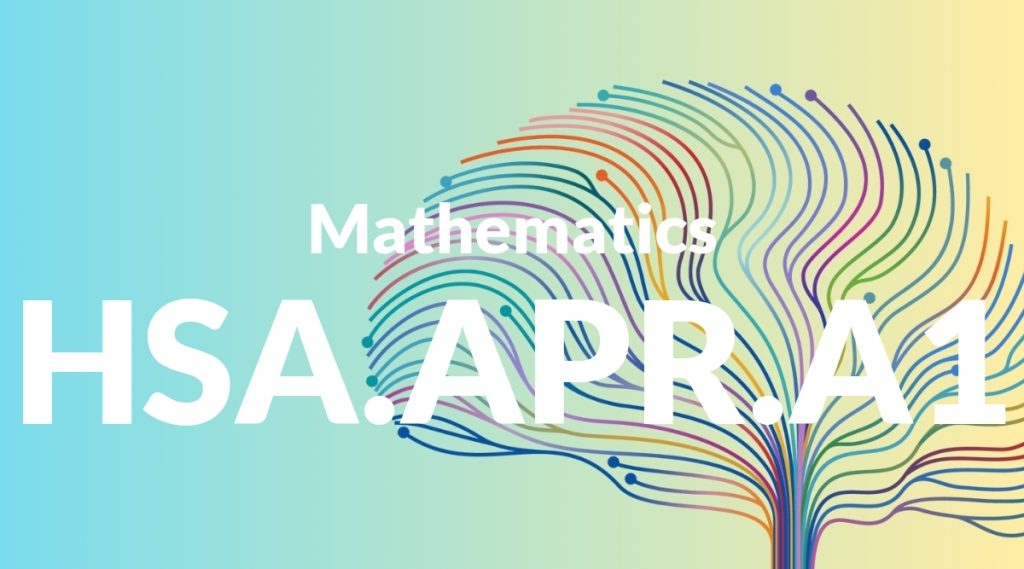Standard: HSA.APR.A1 – Understand that polynomials form a system analogous to the integers, namely, they are closed under the operations of addition, subtraction, and multiplication; add, subtract, and multiply polynomials.
Grade level: High School: Algebra
Subject: Mathematics
Domain: Arithmetic with Polynomials & Rational Expressions
Teacher Overview
This standard emphasizes the understanding that polynomials form a system similar to integers, being closed under addition, subtraction, and multiplication. Mastery of this concept is crucial as it lays the groundwork for more advanced algebraic topics and applications in various fields. Ensure students have a strong grasp of basic algebraic operations and the manipulation of simple algebraic expressions.
Mastering this standard prepares students for more complex polynomial equations, systems of equations, and advanced topics in calculus and applied sciences.
Common Misconception 1
Some students may believe that polynomials are not closed under subtraction or multiplication. This misconception arises from a lack of understanding of the fundamental properties of polynomials.
Intervention 1
Utilize guided practice with concrete examples to demonstrate that subtracting or multiplying any two polynomials always results in another polynomial.
Common Misconception 2
Students might confuse the operations rules for polynomials with those for rational expressions, leading to errors in their calculations.
Intervention 2
Clarify the differences between polynomial and rational expression operations through targeted practice problems and clear distinctions in instruction.
Prerequisite Knowledge
Students should have a solid understanding of basic algebraic operations, including addition, subtraction, multiplication, and the concept of variables and constants. Familiarity with simple algebraic expressions and their manipulation is also essential.
Subsequent Knowledge
After mastering this standard, students will be able to tackle more complex polynomial equations and systems of equations. They will also be prepared for topics in calculus, such as polynomial differentiation and integration, as well as advanced applications in physics and engineering.
Instructional Activities
- Interactive polynomial addition and subtraction games
- Group activities solving real-world problems using polynomial equations
- Guided practice sessions with polynomial multiplication
- Peer teaching sessions where students explain polynomial operations to each other
- Use of graphing calculators to visualize polynomial functions and their operations




